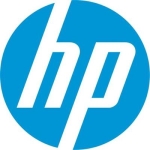What is our primary use case?
We mainly use this solution for security reasons. We use it for the complete stack of email security so we don't have to use a third-party tool, and we use the extended security features that are included in M365, like sandboxing.
The solution is deployed on the Azure cloud. We're a cloud-only company, so we only deploy cloud workloads, but we also have customers with legacy systems. If we're not able to migrate them to Azure, Defender for the server can be deployed on-premise.
The solution is deployed across Germany in four regions: Munich, Cologne, Bremen, and Hamburg. However, most people work from home.
There are about 50 endpoint users, but we have customers with thousands of users. We focus on customers with a thousand seats or more.
We use the entire M365 E5 license for everything that's going on in the M365 world. We try to accomplish everything we need with Microsoft products.
It was very easy to integrate the solutions. We integrated them so we could have an overall good view of our assets. The installation was fully automated via Intune.
How has it helped my organization?
Overall, the solution has decreased our time to detect and respond. If there is any issue, it's not complicated to get the information we need and respond quickly. We offer managed services to some customers, and we have a very clear view of what's going on in their security environments.
One of our main focuses is IT security. This solution has a huge impact on how we use tools and what we do in IT.
One of the biggest points is that Defender is included in the license. It's integrated fully into the M365 world. There's no need to have a third party, which is more complex and includes additional costs. Especially because we're partners, it's very good to have 100 free licenses. We're able to distribute all the information to our customers and integrate it into our projects in a very streamlined way.
We saw all of these benefits instantly. It's different with customers because they are often heterogeneous in the software they use. There's a little bit of explaining and promoting, but it's a huge benefit for most of our customers when they understand that they can have a centralized view of all these security topics. If we are able to deploy the solution to new customers, the benefits are realized in about six months because we have to train them and implement all of the security.
The solution helps with finding high alerts. I wouldn't say it helps with automation because we are piping the problem into the Jira automation, so our managed service kicks in. I would say that it's half-automated.
It helps save time when it comes to the operation and receiving information because we don't have to skip around with different products and customer situations.
This solution enabled our security operations. The legacy approach, in which the tools are in place and someone occasionally checks them, is not secure as it's meant to be today.
It eliminates the need to look at multiple dashboards and gives us one XDR dashboard. The consolidated dashboard helps our customers get a faster view, which wasn't possible with the former solution.
The solution's threat intelligence helps us prepare for potential threats before they hit and to take proactive steps. Our security team is able to work well with it, and a lot of information is getting to our internal users. We distribute everything we learn to our customers.
Sentinel enables us to ingest data from our entire ecosystem because we're cloud-only, so there is no other architecture to monitor.
I would say the logging and analyzers are about 80% of our security operations. The ability to have a clear view of the security information is a big win. For legacy implementations, it's normal to have the security installed but not be able to monitor, detect anything, or get the information to the right people.
For the most part, Sentinel enables us to investigate threats and respond holistically from one place. Today, there are different views, different websites, and different portals to use in order to drill down and get to the real problem. It's a good starting point.
What is most valuable?
I like the easy integration and advanced possibilities. We can implement it at customer sites in a few clicks, but we can also dive deep and drill down to extended features. There's a very good starting point to get into this product and all the features from Defender. We use Plan 1 for email security because it's a common vector for phishing and attacks. The Plan 2 version goes more into advanced features and logging, which we also use for our internal security operations center.
The solutions work natively together to deliver coordinated detection and response across our environment by about 80%. There should be something to get a consolidated view, which doesn't exist at the moment. We have a known tool in place to consolidate all the information into one view for us. That would be a perfect function to have in the future.
I have more than 15 years of experience in IT security, so I have a very good understanding of the tools we need for a use case. I think the documentation helps us and all of our customers comprehend the product. For cloud products, it's normal that something new today is almost outdated tomorrow. Company-wide, we have a very good view of all these products, and we're very firm in deploying them.
What needs improvement?
I would like more of the features in Defender for 365 to be included in the smaller licenses. Even if I buy a small license and don't need everything, security shouldn't be a question. Security is one of the main aspects of all projects from our side, so it would be nice to have more features in the smaller licenses.
I would also like a more aesthetically pleasing dashboard. For German customers, it's important that the solution is in German. Multi-language support should be in all the features if possible. In many projects, we want to use digital signatures on emails. It would be perfect to have better integration of digital signing in a standard way.
In the last few months, the dashboard changed very often. When they restructure it, it's a little bit painful. Otherwise, the technology is very helpful.
The visibility into threats could be better. For the last six months, getting information from the access points has been difficult. However, the newest version fits very well. It's easy if you've found the right spot to view what's happening.
For legacy organizations or legacy customers, I would say it's possible to save time, but time-saving isn't always the best with security because it needs to be deployed and managed.
It can be installed quickly, but it takes time to check out false positives, have everything in place, and train each end user.
Buyer's Guide
Microsoft Defender XDR
December 2025
Learn what your peers think about Microsoft Defender XDR. Get advice and tips from experienced pros sharing their opinions. Updated: December 2025.
879,371 professionals have used our research since 2012.
For how long have I used the solution?
We have been using this solution for five years since our company started. The solution had a different name, but we have been using it since it's been available. We use company-wide E5 licenses.
What do I think about the stability of the solution?
What do I think about the scalability of the solution?
We haven't had any scalability problems.
How are customer service and support?
I haven't had a lot of contact with technical support.
Which solution did I use previously and why did I switch?
For my personal project, I used many other legacy projects, but not at my company. We aren't selling anything other than the new Microsoft solution at the moment.
How was the initial setup?
The solution doesn't require any maintenance.
What was our ROI?
We have seen ROI in project situations because we removed legacy email gateways and legacy antivirus on-premise solutions.
What's my experience with pricing, setup cost, and licensing?
I would like to have more security features in the lower licenses because not every customer is able to buy E5 licenses. The bundling isn't always easy for our customers to understand. Compared to other tools, it's a good price.
What other advice do I have?
I would rate this solution as eight out of ten.
My advice to those who are looking to implement this solution is to get help from the right company so you can use the solution properly.
Defender helps us prioritize threats, but I would say it's a combination of all the information that we're getting from the internet and from other resources.
To a security colleague who says it's better to go with a best-of-breed strategy rather than a single vendor security suite, I would say that it depends on the customer. If someone has their own VSOCK implemented and many security guys on board, then maybe best-of-breed is what they need.
If someone is a classic customer who doesn't know a lot about security, then they should stick to a one-vendor strategy.
Which deployment model are you using for this solution?
Public Cloud
If public cloud, private cloud, or hybrid cloud, which cloud provider do you use?
Microsoft Azure
Disclosure: My company has a business relationship with this vendor other than being a customer. Partner
















